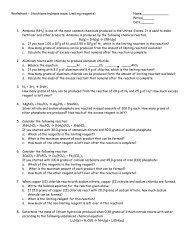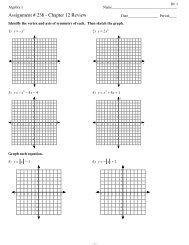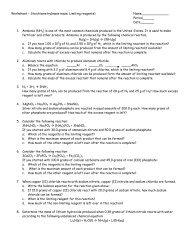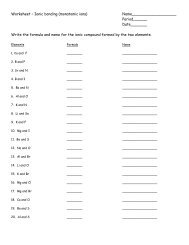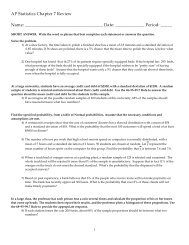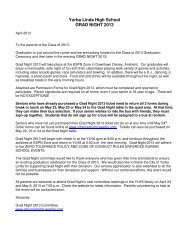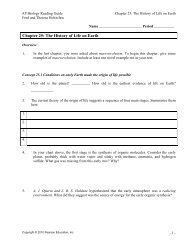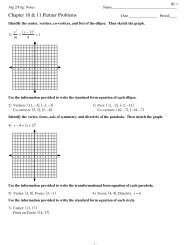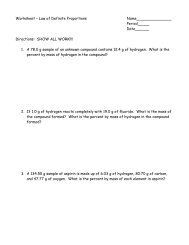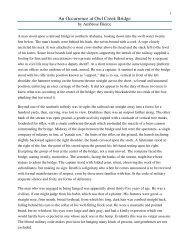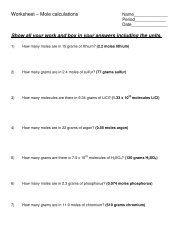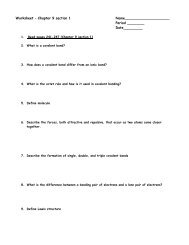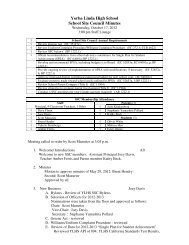Chapter 36: Resource Acquisition and Transport in Vascular Plants
Chapter 36: Resource Acquisition and Transport in Vascular Plants
Chapter 36: Resource Acquisition and Transport in Vascular Plants
- No tags were found...
You also want an ePaper? Increase the reach of your titles
YUMPU automatically turns print PDFs into web optimized ePapers that Google loves.
AP Biology Read<strong>in</strong>g GuideFred <strong>and</strong> Theresa Holtzclaw<strong>Chapter</strong> <strong>36</strong>: <strong>Resource</strong> <strong>Acquisition</strong> & <strong>Transport</strong> <strong>in</strong> <strong>Vascular</strong> <strong>Plants</strong>37. What plant hormone is produced <strong>in</strong> response to water deficiency?38. List four different physiological or morphological adaptations of xerophytes, <strong>and</strong> expla<strong>in</strong> howeach of them reduces water loss.Concept <strong>36</strong>.5 Sugars are transported from leaves <strong>and</strong> other sources to sites of use or storage39. What is translocation?40. What is a sugar source, <strong>and</strong> what is a sugar s<strong>in</strong>k? Give an example of each.41. What cell types transport the sugars?42. Expla<strong>in</strong> the process of pressure flow by annotat<strong>in</strong>g the figure below. Refer to your text, <strong>and</strong>divide this process <strong>in</strong>to four steps.Copyright © 2010 Pearson Education, Inc. - 8 -



